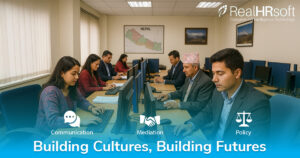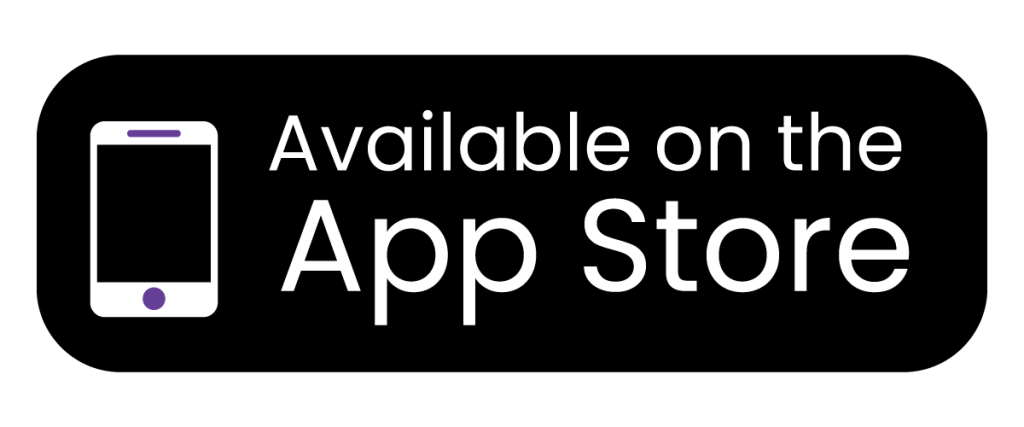Attention, Nepali Business Leaders & Aspiring HR Mavericks!
Let’s be honest. In today’s fast-paced Nepal, are you still grappling with mountains of paperwork, manual attendance sheets, and payroll nightmares? Are you, as an HR professional, bogged down in administrative quicksand instead of shaping your company’s future?
If a single “Yes!” escaped your lips, this is for you.
Imagine This: Your HR, Transformed.
Picture an HR department that runs like a well-oiled machine.
- No more late-night payroll scrambles.
- No more compliance jitters when the Department of Labor comes knocking.
- No more struggling to find that one employee’s record from three years ago.
- And no more feeling like a glorified data entry clerk instead of a strategic partner.
Sounds like a dream, right? In Nepal, this dream is becoming a reality for forward-thinking businesses. The secret? Modern HR Software.
It’s not just about fancy tech; it’s about smart growth, employee happiness, and unshakeable compliance with Nepal Labor Law.
Why Nepali Businesses Can’t Afford to Ignore This Anymore
In a market where agility and efficiency are paramount, outdated HR isn’t just inefficient—it’s a massive liability.
Here’s what modern HR software brings to your table, specifically tailored for our Nepali context:
1. Stop Guessing, Start Knowing: Your Employee Data Hub
Ever wondered who your next leader is? Or what skills your team actually has? A centralized database gives you real-time insights for talent planning, succession, and identifying who needs upskilling.
Forget scattered Excel sheets! One click, and you have every employee’s detail, their employment history, and leave records at your fingertips. Crucial for swift responses, ensuring you’re always aligned with the Labor Act, 2074. No more kaagajpatra ko jhanjhat (paperwork hassle)!
2. Attendance & Leave: Simplicity at Your Fingertips (Literally!)
Analyze absenteeism trends. Are employees overworked? Is a particular team struggling? Data helps you build a healthier, more productive workplace.
Biometric integration means accurate attendance, every time. Leave requests? Just a few taps on a mobile app. This is a game-changer for businesses with distributed teams, project sites, or even a small tea shop employee! Plus, it automatically manages all the nuances of Nepali holidays and leave types.
3. Payroll Perfection: No More “Mero Salary Katyo?”
Understand your labor costs deeply. Optimize budgets. And most importantly, build immense employee trust with accurate, on-time payments.
This is where the magic happens! Automated calculations for income tax, Provident Fund (PF), Citizen Investment Trust (CIT), and the critical Social Security Fund (SSF) contributions. Digital payslips, every month, without fail. Say goodbye to “Sir, mero salary katyo hola?” (Sir, has my salary been deducted?). It’s all transparent, compliant, and stress-free.
4. Performance That Propels You Forward:
Connect individual goals to company vision. Identify your stars, nurture potential, and address underperformance proactively. Foster a culture of continuous growth and feedback.
Forget annual, dreaded reviews. Implement continuous feedback loops. Track KPIs. This system makes performance management fair, transparent, and motivating for everyone from the executive floor to the front-line staff.
5. Recruitment & Onboarding: Attract and Retain the Best
Build a strong employer brand. Streamline the hiring process to land top talent faster, reducing your time-to-hire. A positive onboarding experience translates to higher retention.
From job posting to digital offer letters and automated new hire checklists, everything is seamless. Ensure all necessary documents like citizenship papers and educational certificates are collected digitally, staying compliant with Nepal’s employment regulations.
6. Compliance Confidence: Sleep Easy at Night
Mitigate legal risks, avoid hefty fines, and protect your company’s reputation. Free up your HR team to focus on people strategy, not just paperwork.
The system acts as your personal compliance officer, providing alerts for contract renewals and easy access to all legal documents for audits by the Department of Labor. Stay up-to-date with every amendment to the Labor Act, 2074, Social Security Act, 2074, and other specific regulations. This is HUGE for peace of mind.
7. Employee Self-Service: Empower Your Team (and Your HR!)
When employees can manage their own leave requests, view payslips, and update details from their phone, it boosts their satisfaction and engagement. An empowered workforce is a productive workforce.
Drastically reduces routine HR queries. Your HR team can finally focus on strategic initiatives like talent development and employee engagement, not just answering “Where’s my payslip?” It’s like having a digital HR assistant available 24/7.
Ready to Make the Leap? Your Blueprint for Success
Implementing HR software might sound daunting, but with a clear plan, it’s incredibly achievable. Here’s how successful Nepali businesses are doing it:
Phase 1: The Visionaries (Planning & Preparation)
- Assemble Your Dream Team: HR, IT, Finance, Operations – everyone on board.
- Define Your “Why”: What problems are you solving? What goals will this help you achieve? (e.g., reduce HR admin time by 30%, ensure 100% compliance).
- Shop Smart for Software: Look for vendors who understand Nepali nuances – be it local holidays, specific tax calculations, or support in Nepali language. Get demos, talk to other Nepali companies using their system. Don’t compromise on security or local support!
Phase 2: The Builders (Configuration & Data Migration)
- Tailor it to Nepal: Set up your specific leave policies, attendance rules, and most importantly, configure payroll for all Nepali tax, PF, Gratuity, CIT, and SSF rules.
- Clean House (Data Cleaning!): This is crucial! Ensure your existing data is accurate before migrating it. A clean slate for a fresh start.
- Connect the Dots: Integrate with your existing biometric devices, accounting software, or any other critical systems.
Phase 3: The Learners & Testers (Testing & Training)
- Playtime (User Acceptance Testing): Get key users to rigorously test everything – leave applications, payroll calculations, performance reviews. Break it, fix it, learn from it!
- Upskill Your Team: Comprehensive training for HR, managers, and all employees on how to use the new system, especially the Employee Self-Service portal. Make sure the training is simple, clear, and relatable to them.
Phase 4: The Go-Live & Beyond (Launch & Support)
- The Big Day: Roll out the system! Communicate clearly to everyone.
- Be a Pillar of Support: Have an internal team ready to answer questions. Ensure your vendor provides excellent local support.
- Continuous Improvement: Gather feedback, refine processes, and keep an eye on changes in Nepali labor laws to ensure your system always stays compliant.
Don’t Let Your Business Get Left Behind!
The future of HR in Nepal is digital, strategic, and empowering. By embracing modern HR software, you’re not just buying a tool; you’re investing in efficiency, compliance, and ultimately, the growth and success of your Nepali business.
Ready to take the leap? Start your journey towards smarter HR today!
Reach out for global strategic HR consulting and expert HR consulting services from Nepal!
info@aayulogic.com +977-9802-075555







